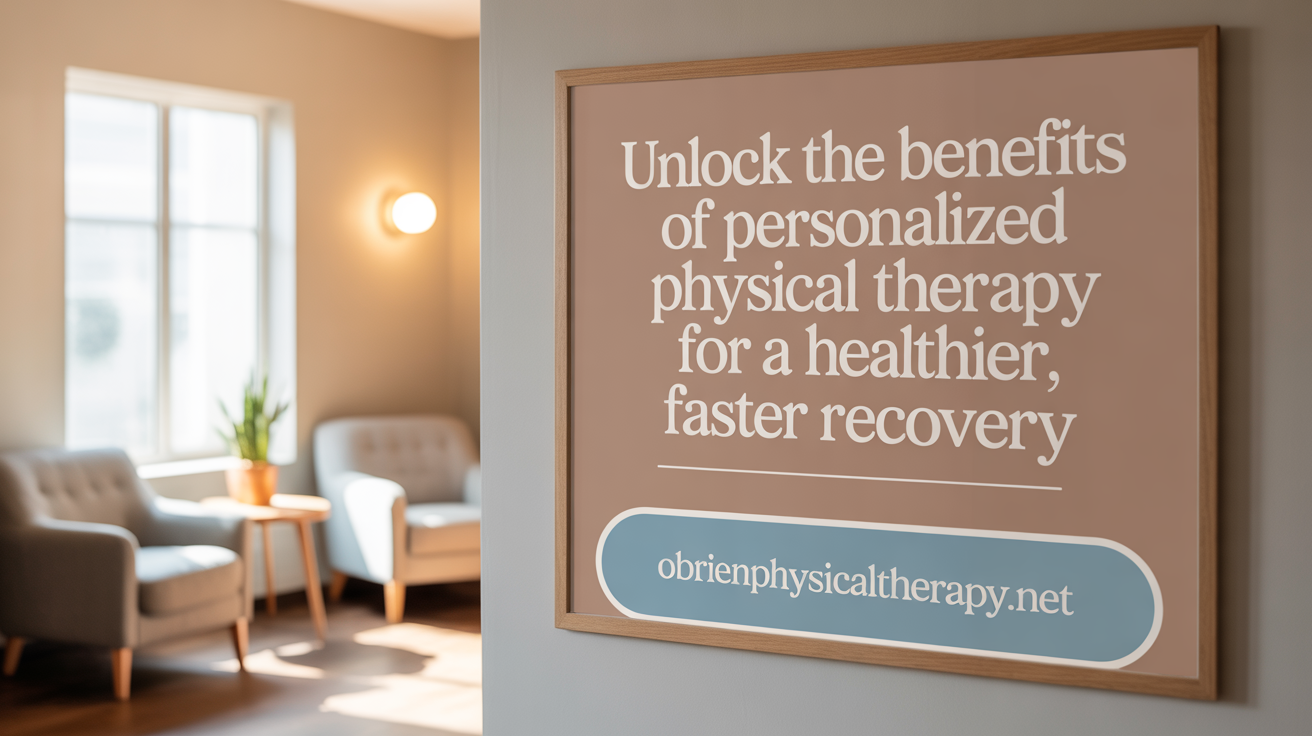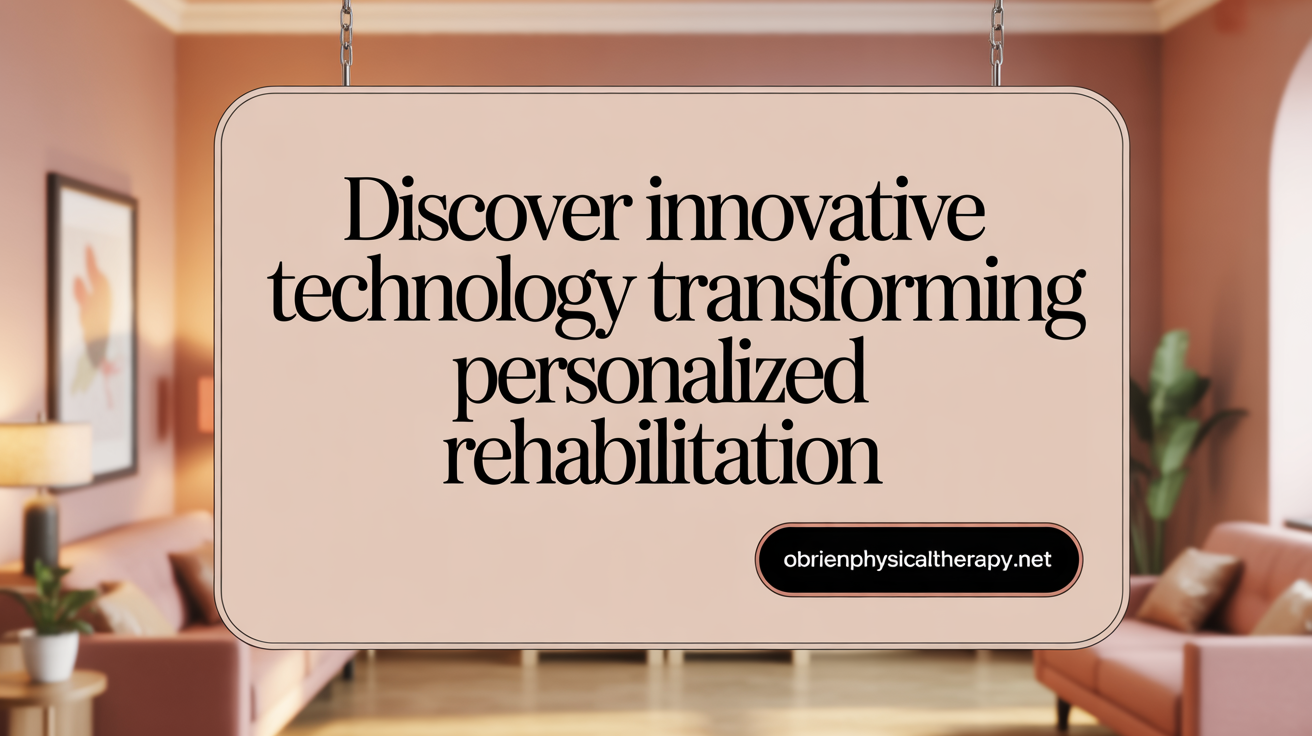Welcome to the Future of Tailored Physical Therapy
Personalized physical therapy is transforming how patients recover, manage pain, and enhance wellness by focusing on individualized care plans that prioritize the unique needs, goals, and lifestyles of each person. This patient-first approach not only improves outcomes but also empowers patients throughout their journey to recovery. In this article, we will explore how personalized physical therapy works, what patients can expect, and the advancements making treatment more precise and effective than ever before.
Understanding Personalized Physical Therapy and Its Benefits

What is personalized physical therapy and what are its benefits?
Personalized physical therapy is a patient-focused approach that creates customized treatment plans tailored to an individual’s specific medical history, physical condition, goals, and daily routines. Instead of a one-size-fits-all method, therapists assess each patient carefully—examining strength, flexibility, mobility, and other factors—to develop a plan that best suits their needs.
This approach often includes manual therapy, targeted exercises, and motivational strategies to improve mobility, reduce pain, and accelerate recovery. It emphasizes active patient participation and open communication, ensuring that treatment aligns with personal goals.
The advantages of personalized physical therapy are numerous. Patients typically see better outcomes because the therapy directly addresses their unique issues. Satisfaction levels tend to be higher when patients feel listened to and involved in their recovery process.
Additionally, tailored treatment plans can help prevent future injuries by focusing on specific risk factors and improving overall strength and stability. Such individualized care can also be more cost-effective over time, reducing the need for unnecessary interventions or prolonged treatment.
By fostering stronger relationships between patients and their therapists, personalized approaches promote adherence to therapy regimens and enhance overall well-being. Ultimately, this method supports quicker, more sustainable recovery and a better quality of life.
The Patient Experience: What to Expect During Your Initial Physical Therapy Visit

What should patients expect during the initial physical therapy consultation?
During the first visit to a physical therapy provider, patients will undergo a comprehensive assessment lasting typically between 50 to 90 minutes. A licensed therapist begins by reviewing the patient's medical history and understanding their current health concerns and lifestyle. This is followed by a detailed discussion about symptoms, daily activities, and specific limitations.
The therapist then performs a series of assessments, including tests of strength, flexibility, balance, posture, and joint mobility. Patients are usually asked to wear loose, comfortable clothing and are encouraged to bring relevant documents such as insurance cards, medical reports, and a list of current medications.
Based on the evaluation, the therapist develops a personalized treatment plan tailored to the individual’s condition and goals. This plan may involve specific in-clinic therapies, prescribed home exercises, and strategies for pain management. Communication is vital during this phase—patients should voice their concerns, ask questions, and discuss their expectations to ensure clarity and alignment.
Ultimately, the first visit aims to establish a solid foundation for recovery, focusing on creating an effective, safe, and customized approach to rehabilitation.
How Personalized Physical Therapy Prioritizes Care and Enhances Outcomes

How does personalized physical therapy prioritize patient care and outcomes?
Personalized physical therapy focuses on customizing treatment plans to align with each patient's unique needs, conditions, and goals. Therapists start with thorough assessments that consider biomedical factors such as joint mobility, muscle strength, and medical history, as well as psychosocial elements like the patient’s lifestyle, beliefs, and personal objectives.
This person-centered approach encourages active patient participation. Shared decision-making involves discussing treatment options, setting realistic goals, and ensuring the patient understands and agrees with their care plan. Such engagement fosters trust, improves adherence to exercises and therapies, and ultimately leads to better clinical results.
Many clinics leverage innovative tools like reference charts that compare a patient's progress to similar individuals, providing valuable context. These tools help therapists adjust interventions based on how others with comparable characteristics respond to therapy, enhancing personalization.
Effective communication and cultural competence are integral to delivering relevant care. Therapists continually follow up and modify plans based on ongoing feedback and outcome data.
Tables below summarize how different factors support personalized care:
| Factor | Description | Impact |
|---|---|---|
| Comprehensive assessments | Evaluating medical history, mobility, strength, and psychosocial factors | Enables tailored interventions |
| Patient engagement | Shared decision-making and goal setting | Improves motivation and adherence |
| Use of outcome data | Monitoring progress and adjusting plans | Enhances effectiveness |
| Feedback and ongoing support | Regular follow-up and communication | Maintains relevance of treatment |
In essence, person-centered rehab puts the patient at the heart of care, aligning therapies with their lives and expectations. This strategic focus improves not only physical outcomes but also patient satisfaction, contributing to a better quality of life.
Tailored Treatment Approaches for Diverse Needs and Conditions
 Patient-centered physical therapy focuses on customizing treatments to meet each individual's unique needs, goals, and lifestyle. Therapists use a variety of techniques such as manual therapy—where hands-on manipulation of soft tissues and joints help reduce pain and improve mobility—and exercise prescription tailored to strength, flexibility, and endurance levels.
Patient-centered physical therapy focuses on customizing treatments to meet each individual's unique needs, goals, and lifestyle. Therapists use a variety of techniques such as manual therapy—where hands-on manipulation of soft tissues and joints help reduce pain and improve mobility—and exercise prescription tailored to strength, flexibility, and endurance levels.
For athletes and active individuals, personalized therapy programs are often more specialized. These programs start with detailed assessments—including medical history, physical exams, and advanced imaging like MRI or ultrasound—to identify biomechanical issues and injury causes. Based on these insights, therapists develop targeted plans that incorporate sports-specific exercises, injury prevention strategies, nutrition advice, and mental conditioning.
Technologies play a vital role in enhancing treatment precision. Ultrasound and shockwave therapy are used to stimulate healing, while ultrasound-guided injections ensure accurate delivery of therapeutic agents. Data-driven tools, such as 'people-like-me' outcome charts, provide real-time feedback, helping clinicians refine interventions and set realistic expectations.
Education and motivation are integral components of these approaches. Therapists educate patients on proper movement mechanics, injury prevention, and self-care strategies, empowering them to participate actively in recovery. Motivational interviewing techniques foster engagement and adherence to treatment regimens.
Several specialized therapies further support holistic health. For example, neurological rehab assists stroke survivors, while pelvic floor therapy benefits women experiencing bladder leaks or pelvic pain. The integration of these services ensures comprehensive care tailored to individual health profiles and specific conditions, promoting optimal recovery and sustainable well-being.
Innovation in Personalized Physical Therapy: Technology and Beyond

What advancements exist in technology-assisted or clinician-guided personalized physical therapy?
Recent innovations have significantly enhanced the landscape of physical therapy, making treatments more precise, engaging, and accessible. One major development is the use of wearable sensors, such as skin sleeves and fitness trackers, which monitor biometric data like muscle activity, joint movement, and heart rate in real-time. These devices provide instant feedback, allowing therapists to track progress and adjust treatments instantly.
Virtual reality (VR) and gamification are transforming patient engagement. Motion-sensor gaming and immersive environments motivate patients to perform prescribed exercises more consistently and with better form, improving overall adherence. These technologies turn therapy into interactive, enjoyable experiences.
Robotics, including exoskeletons and neuromodulation techniques like Transcranial Magnetic Stimulation (TMS) and Transcranial Direct Current Stimulation (tDCS), are used to support motor recovery, especially for neurological conditions. They enable targeted, specific interventions and promote neuroplasticity, helping patients regain movement and strength.
Remote monitoring and telehealth platforms leverage the Internet of Things (IoT) and smart equipment to extend therapy beyond clinics. Patients can perform supervised or unsupervised exercises at home, with data shared automatically with clinicians. This expands access and continuity of care, even from a distance.
Artificial Intelligence (AI) and computer vision are now integral to creating personalized care plans. AI-driven software can analyze large datasets to recommend adjustments in treatment strategies, predict recovery milestones, and optimize exercises based on individual progress.
Emerging tech like bioprinting and tissue engineering, although still developing, hold promise for regenerating damaged tissues, potentially revolutionizing recovery options.
These advances collectively enable a more tailored, effective, and accessible approach to physical therapy, improving outcomes and patient satisfaction.
Putting You at the Center of Your Healing Journey
Personalized physical therapy represents a paradigm shift in rehabilitation and wellness, placing the patient’s unique needs and goals at the forefront of every treatment decision. By combining expert clinical care with tailored approaches and innovative technologies, this model enhances recovery speed, pain management, and long-term health outcomes. Whether recovering from injury, managing chronic conditions, or striving to achieve peak athletic performance, personalized physical therapy empowers patients to actively participate in and control their journey to optimal function and quality of life. Discovering providers who embrace this patient-first philosophy is the first step to experiencing personalized care that truly puts you first.
References
- PT Solutions Physical Therapy | Be Unstoppable
- Campbell's Premier Physical Therapy Personalized Treatment and ...
- Sword Health: AI Physical Therapy For Pain and Prevention
- Physical Therapy and Rehabilitation Services at Sutter Health
- Home | ACCESS PT
- First Choice Physical Therapy
- What To Expect On Your First Visit - PT Solutions
- Evolution Physical Therapy | Redefining Physiotherapy Across The ...
- Preparing for Your Visit with a Physical Therapist | Choose PT
- Custom Physical Therapy | We treat the whole patient, not just the ...
